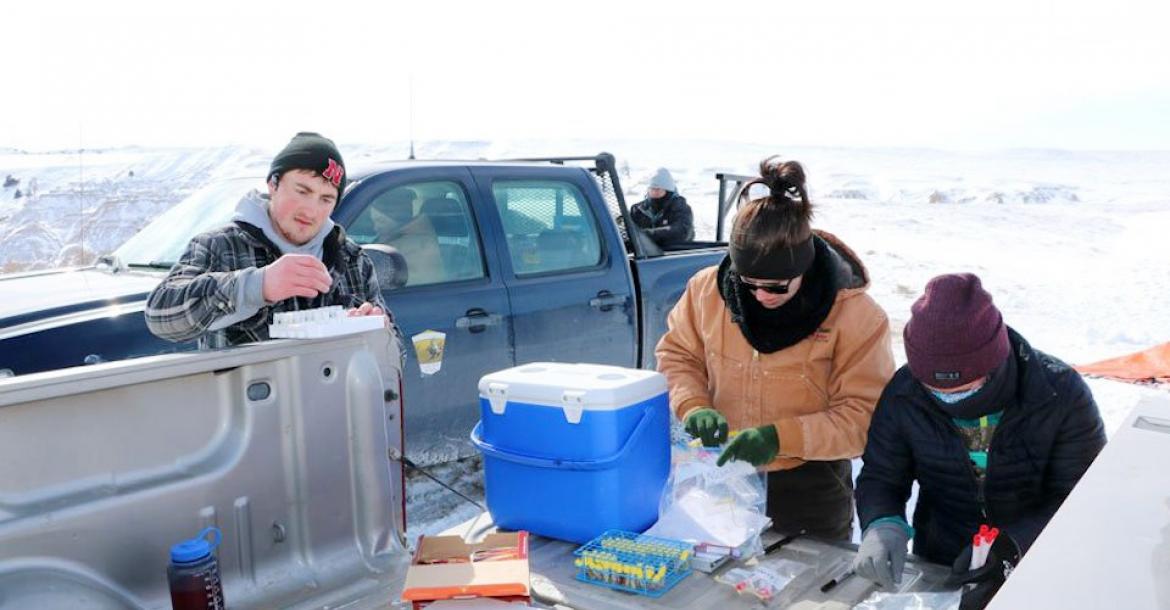S.D. wildlife group honors Wieseler for his Bighorn Sheep research
BROOKINGS S.D. — Aus- tin Wieseler, who is pursuing a master’s degree in the Department of Natural Resource Management, received the 2019 Outstanding M.S. Graduate Student Award from the South Dakota chapter of The Wildlife Society.
The award recognizes students who demonstrate excellence in the study of wildlife ecology and management.
The St. Helena native has been doing research on bighorn sheep in Badlands National Park under the supervision of SDSU Professor Jonathan Jenks. The three-year National Park Service study involves monitoring survival and mortality in adult and yearling sheep.
The Wildlife Society, an international, nonprofit scientific and educational organization, seeks to enhance scientific, technical, managerial and educational capabilities and achievements of wildlife professionals.
“I am excited and honored to receive this award. This is definitely a highlight of my career at South Dakota State,” said Wieseler, a 2012 graduate of Wynot Public High School in Wynot, Nebraska.
Wieseler is the third SDSU student working on bighorn research with Jenks to receive the graduate student award. Tyler Garwood got the master’s student award last year and Brandi Felts received the doctoral student award in 2017.
Jenks, who nominated Wieseler, said, “I view what Austin’s accomplished as significant. He is a self-starter and is able to make connections with students and other wildlife professionals. He brings what he has learned at SDSU to the table and is very knowledgeable about bighorn sheep ecology and management.”
During his junior year, Wieseler began working with bighorn sheep as a research
technician at the Dept. of Natural Resource Management’s Wildlife Research facility. After completing his bachelor’s degree, he worked for South Dakota Game, Fish and Parks from 2016 until February 2017, when the Badlands research project began.
“It’s hard work, but very rewarding,” said Wieseler. In 2017, he collared 23 lambs and recorded a 74 percent survival rate through six months of age. By May 2018, Wieseler had collared 30 lambs. When a collared lamb dies, the researches quickly determine the cause, whether it's predation, abandonment or simply falling into a crevice, he explained. "The goal is to get them to a year old."
Though the researchers are looking at a broad spectrum of diseases, one of their big- gest concerns is Mycoplasma ovipneumoniae, a pneumonia-causing pathogen that has devastated other bighorn sheep herds, including those in Custer State Park and Rapid City.
“This disease affects bighorn sheep throughout the western United States,” said National
Park Service Wildlife Biologist Eddie Childers, who manages a Badlands bighorn sheep herd. “This is one of the largest populations in the state of South Dakota—and the healthiest. Austin’s work is crucial to protecting the herd’s health.”

